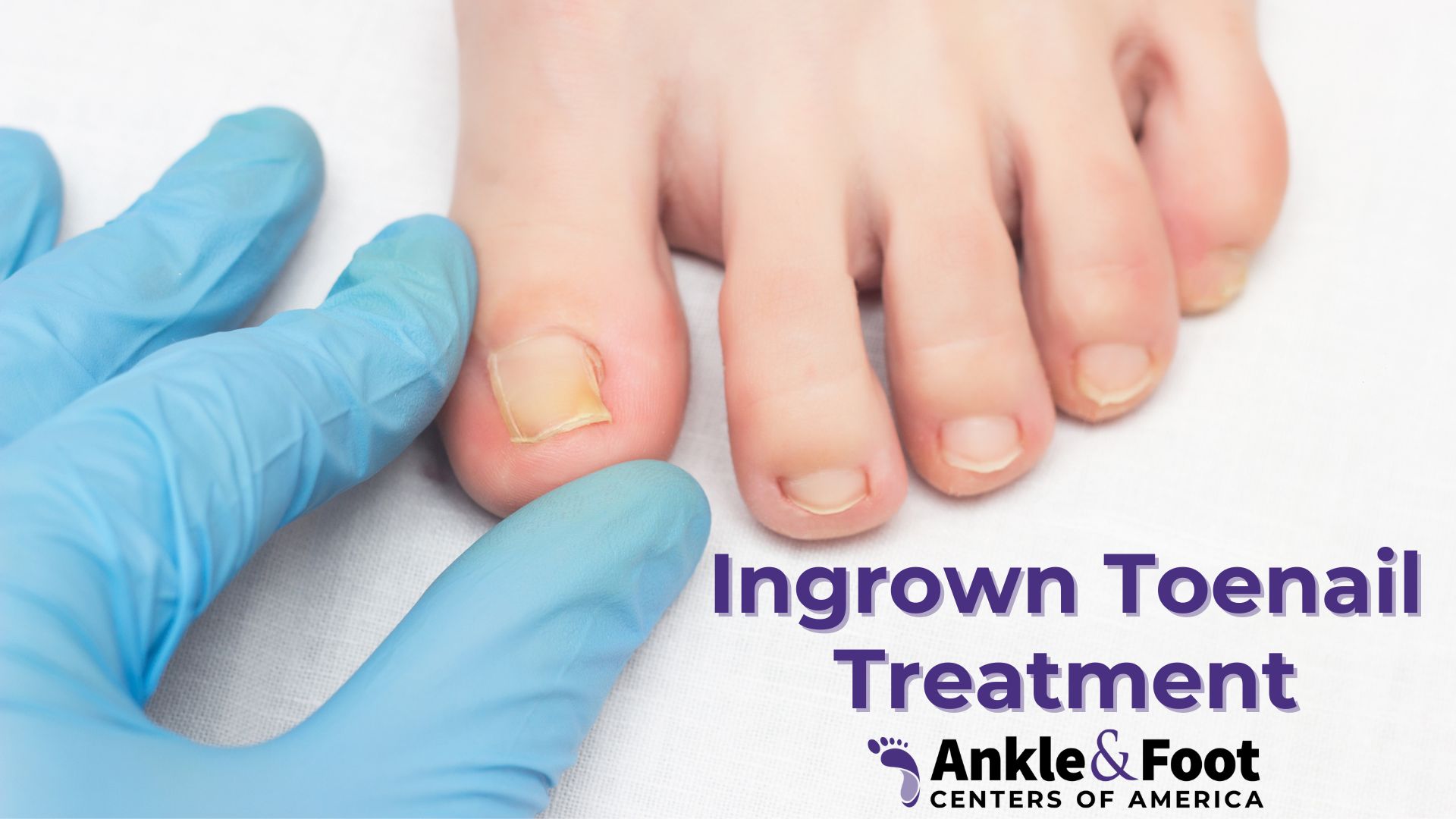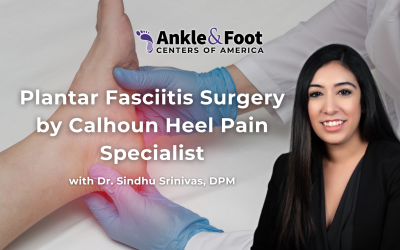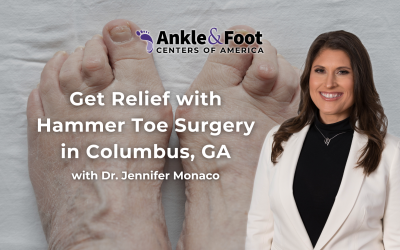Table of Contents
What is an Ingrown Toenail?
An ingrown toenail, also known as onychocryptosis, are a common and sometimes painful condition that can affect people of all ages. They occur when the corner or side of a toenail grows into the surrounding skin, causing discomfort and inflammation. If left untreated ingrown toenails can lead to more serious complications, including infection and damage to the surrounding tissues. It’s essential to recognize the signs of an ingrown toenail and take appropriate action to prevent further issues.
Importance of Proper Treatment
Treating an ingrown toenail promptly and effectively is crucial to avoid complications and alleviate pain. If left untreated, an ingrown toenail can become infected, leading to an abscess or even a more severe bone infection. Furthermore, individuals with certain health conditions, such as diabetes, are at a higher risk for developing serious complications from an untreated ingrown toenail. Thus, it’s important to know how to fix an ingrown toenail and when to seek medical treatment.
Common Causes of Ingrown Toenails
Ingrown toenails can be caused by various factors, including improper nail trimming, tight footwear, or trauma to the toe. Genetics can also play a role, as some individuals may have naturally curved toenails that are more prone to becoming ingrown. Understanding these causes can help in preventing ingrown toenails and ensure proper care for your feet.
Symptoms of an Infected Ingrown Toenail
Recognizing the signs of infection early on is vital to ensure proper treatment and prevent complications. The following are common symptoms that may indicate an ingrown toenail has become infected.
Pain and inflammation
One of the primary symptoms of an infected ingrown toenail is pain, which can range from mild to severe. Inflammation is another common sign, as the skin around the ingrown toenail becomes swollen and may appear raised.
Redness and warmth
An infected ingrown toenail is often characterized by redness around the affected toe, with the skin appearing flushed or darker than usual. The area may also feel warm to the touch.
Pus or drainage
In some cases, an infected ingrown toenail can result in the formation of pus or other discharge. This can be a clear sign of infection, and it’s important to seek medical attention if you notice any pus or drainage from the area surrounding the ingrown toenail.
Overgrown skin around the nail
As the body tries to protect itself from the ingrown toenail, the skin around the nail may begin to grow over the nail’s edge. This overgrown skin may appear reddish or flesh-colored and can be another sign of infection or a worsening ingrown toenail.
If you’re experiencing any of these symptoms, it’s crucial to address the issue promptly to prevent complications and alleviate pain. In the next sections, we’ll explore how to fix an ingrown toenail and when it’s necessary to seek medical treatment.
When to Seek Medical Treatment for Ingrown Toenail?
Pain or possible infection
If your pain is severe or you’re experiencing symptoms of infection, such as redness, warmth, or pus, it’s important to consult a healthcare professional. They can assess the severity of the ingrown toenail and recommend appropriate treatment.
Diabetes or other health conditions that affect circulation
Individuals with diabetes or other conditions that affect circulation should seek medical treatment for ingrown toenails, as they’re at a higher risk of developing complications. Poor circulation can hinder the healing process, making it essential to get professional help.
No improvement after trying at-home remedies
If your ingrown toenail doesn’t improve after trying at-home treatments for a week or two, it’s time to seek medical attention. A healthcare professional can provide more advanced treatments to help resolve the issue and prevent further complications.
How to Fix an ingrown toenail
There are several ways to treat an ingrown toenail at home that can help alleviate some pain and best case scenario, promote healing. Some at-home options are:
- Soaking the foot in warm water, you may also add Epsom salt to the water to further aid in the healing process.
- Using over-the-counter pain relievers to help manage pain and discomfort, such as ibuprofen or acetaminophen, as directed. These medications can help reduce inflammation and provide temporary relief.
- Applying antibiotic ointment, after soaking your foot and gently drying it. This can help prevent infection and promote healing. Cover the area with a bandage or gauze to keep it clean and protected.
- Avoid tight shoes that can put pressure on the ingrown toenail. Instead, opt for comfortable, well-fitting shoes with a wide toe box to provide ample space for your toes
Despite the at-home remedies listed above, it’s always recommended to seek medical attention to avoid further problems they may occur due to ingrown toenails.
Ingrown Toenail Removal
In some cases, ingrown toenail removal surgery may be necessary to effectively treat the condition and prevent recurring issues. This is especially true when the toenail has become severely ingrown or if conservative treatments have proven ineffective. Here, we’ll explore the different types of ingrown toenail surgery and the recovery process.
Overview of the Surgical Procedure
Ingrown toenail surgery is typically performed under local anesthesia, numbing the affected toe to ensure the patient’s comfort during the procedure. Depending on the severity and recurrence of the ingrown toenail, a healthcare professional may recommend one of several surgical options. There are three main types of ingrown toenail surgery, each designed to address specific issues related to the condition.
Partial ingrown nail removal
This procedure, also known as a partial nail avulsion, involves the removal of the ingrown portion of the toenail. The healthcare professional will carefully cut and remove the problematic section, allowing the surrounding skin to heal without further irritation. This method is often used for less severe cases or when the ingrown toenail is not a recurring issue.
Total ingrown nail removal
In more severe cases or when the entire toenail is causing problems, a healthcare professional may recommend total nail removal, or complete nail avulsion. During this procedure, the entire toenail is removed, allowing for a new, healthier nail to grow in its place. This option is generally reserved for situations where other treatments have been unsuccessful.
Nail matrixectomy
A nail matrixectomy is a procedure in which a portion of the nail bed, the tissue responsible for nail growth, is removed or destroyed. This prevents the ingrown portion of the toenail from growing back, reducing the likelihood of future ingrown toenails. This procedure can be performed chemically, using a solution to destroy the matrix, or surgically, by removing the matrix tissue.
Recovery and Aftercare
Following ingrown toenail surgery, it’s important to follow your healthcare professional’s aftercare instructions to ensure proper healing and minimize the risk of complications. This may include keeping the area clean and dry, applying antibiotic ointment, and wearing open-toed shoes or loose-fitting footwear. Most people can return to their normal activities within a few days, although complete healing may take several weeks. If you experience severe pain, swelling, or signs of infection, contact your healthcare provider for further evaluation.

Ingrown Toenail Prevention Tips
Preventing ingrown toenails is key to avoiding the discomfort and complications associated with the condition. By following a few simple guidelines, you can significantly reduce your risk of developing ingrown toenails.
Proper nail trimming techniques
One of the primary causes of ingrown toenails is improper nail trimming. To prevent this, always cut your toenails straight across, rather than rounding the corners or cutting them too short. Use clean, sharp nail clippers and avoid tearing or ripping the nails. It’s also helpful to soften the nails by soaking your feet in warm water before trimming.
Choosing the right footwear
Tight shoes can put pressure on your toenails and increase the risk of ingrown toenails. Choose footwear with a wide toe box that allows your toes to move freely and doesn’t compress them. Opt for shoes made of breathable materials and avoid high heels or shoes that place excessive pressure on the front of your foot. Additionally, ensure that your socks fit well and do not constrict your toes.
Maintaining good foot hygiene
Keeping your feet clean and dry can help prevent ingrown toenails and other foot-related issues. Wash your feet daily with soap and water, and dry them thoroughly, paying particular attention to the spaces between your toes. Moisturize your feet as needed to prevent dry, cracked skin, and wear clean, moisture-wicking socks to help keep your feet dry throughout the day. Regular foot care and hygiene can go a long way in preventing ingrown toenails and promoting overall foot health.
Conclusion
Ingrown toenails are a common and potentially painful condition that can lead to complications if not properly treated. By understanding the symptoms, causes, and available treatment options, you can effectively address the issue and maintain your foot health.
Don’t hesitate to seek help from your local podiatrist if you’re experiencing severe pain, signs of infection, or if at-home treatments haven’t led to improvement. Healthcare professionals can provide advanced treatment options, including ingrown toenail surgery, to help you find relief and prevent further complications. Remember, taking care of your feet is an important aspect of your overall well-being.






